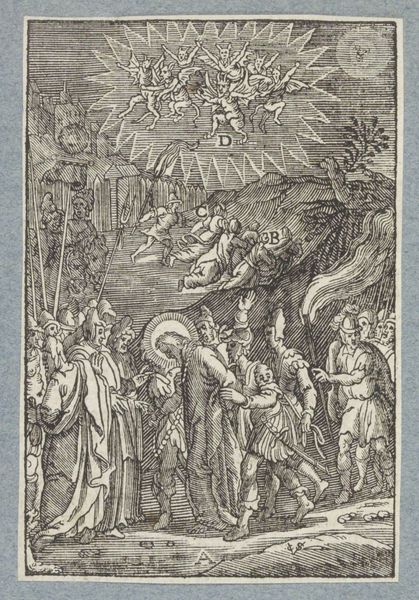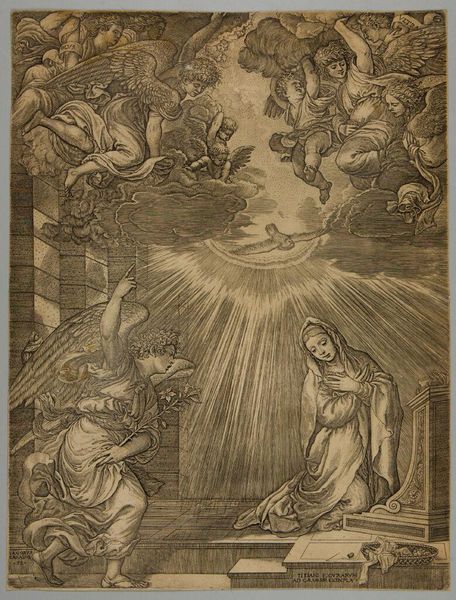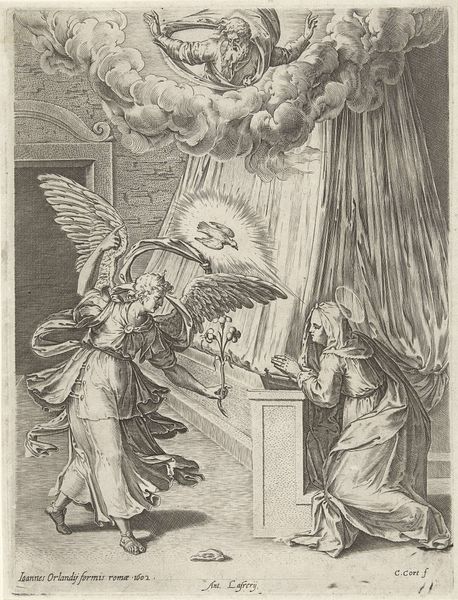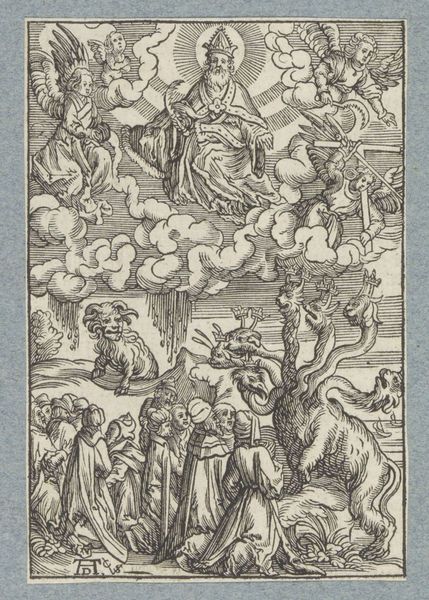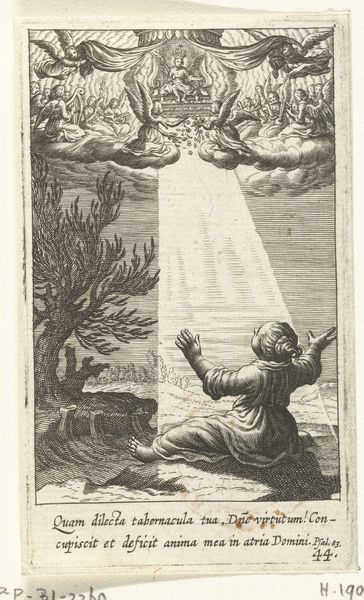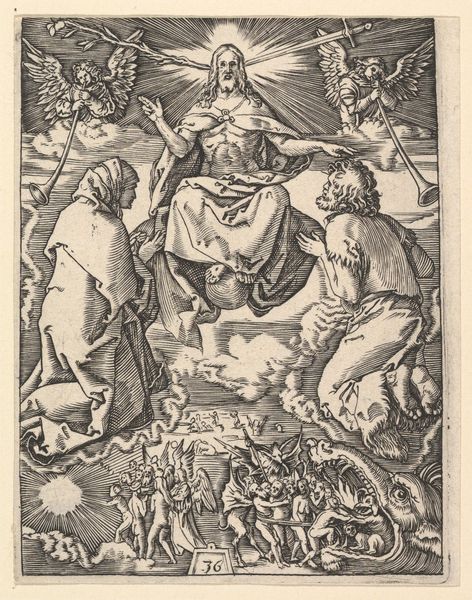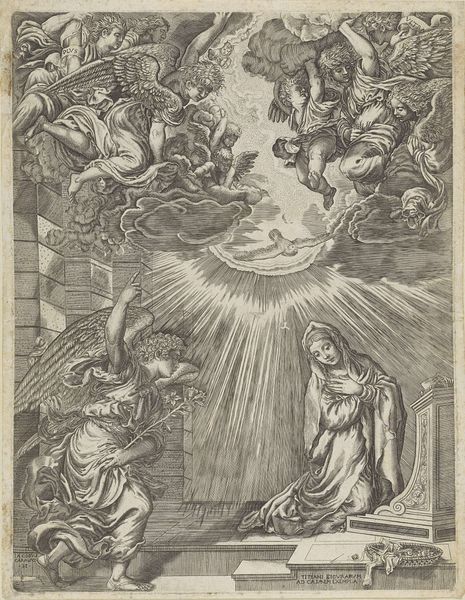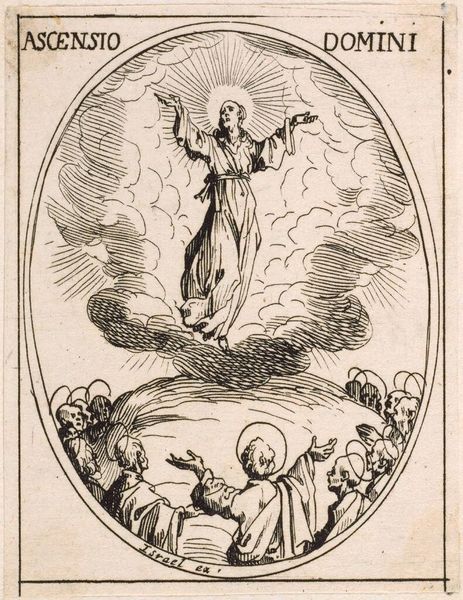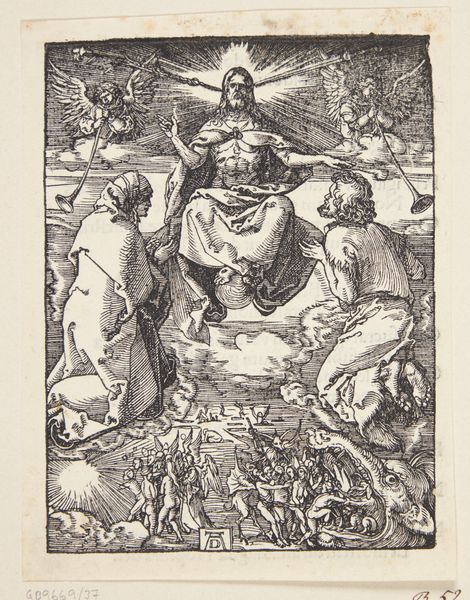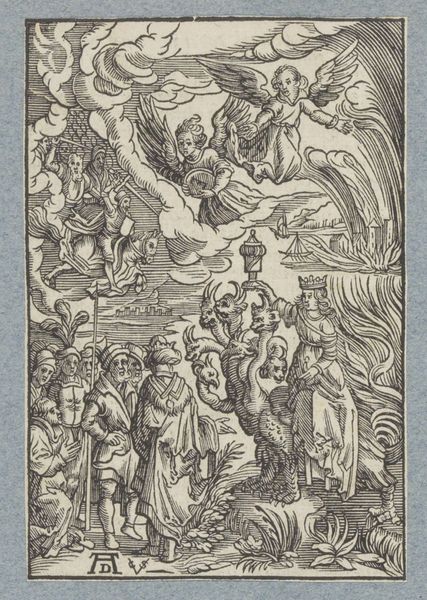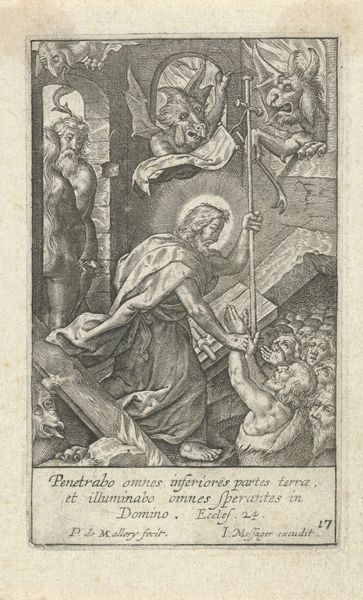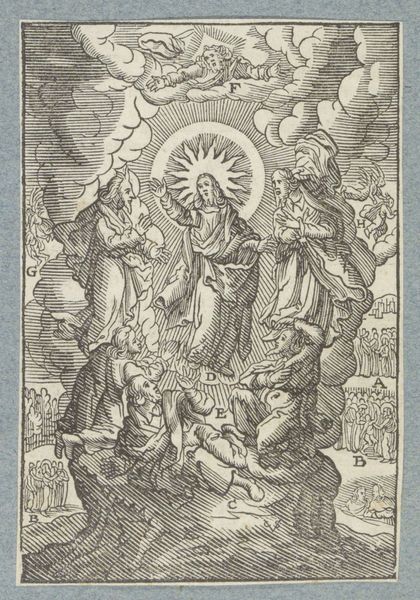
print, engraving
#
narrative-art
#
baroque
# print
#
pen sketch
#
figuration
#
line
#
history-painting
#
engraving
Dimensions: height 217 mm, width 78 mm
Copyright: Rijks Museum: Open Domain
Curator: This engraving, "Annunciation," was created by Abraham Starre sometime between 1711 and 1778. Editor: There's a stark, almost severe quality to this image, a formality conveyed by the precise lines and shading. The high contrast amplifies the dramatic moment. Curator: Yes, the Baroque era really influenced Starre's attention to dramatic composition. I'm intrigued by his technique; look at the line work – it appears meticulous. The textures he achieves, especially in the robes and clouds, speak to the skill required of an engraver, carving into a metal plate to create the printing surface. Editor: It is interesting to note how Mary’s pose communicates submission, yet also embodies a significant political act within a religious framework. Consider the socio-political conditions of the time; questioning the roles and power dynamics embedded in faith often became intertwined with questioning societal norms. The lines, literally inscribed, communicate culturally coded meaning. Curator: The means of reproduction also affect reception; the dissemination of prints played an important role. How did this affordable, repeatable image contribute to shaping popular belief and visual culture beyond the elite circles who commissioned large-scale paintings? How did the materials—the ink, the paper— impact the affordability and accessibility of the image for a wider audience? Editor: I'd suggest it’s about making the divine accessible to the masses, but also reinforcing existing social structures and expectations related to gender and obedience. This isn’t simply an image of piety; it’s part of a much larger historical conversation on authority, belief, and gendered behavior. The very act of mass production turns it into something akin to propaganda, framing social expectations under a veil of religious importance. Curator: Indeed, engaging with those complexities embedded in production gives further weight to interpretations of cultural impact, even hundreds of years after this piece's production. Editor: Agreed, by situating “Annunciation” within that framework, we not only gain appreciation for the art but can question its influence.
Comments
No comments
Be the first to comment and join the conversation on the ultimate creative platform.
